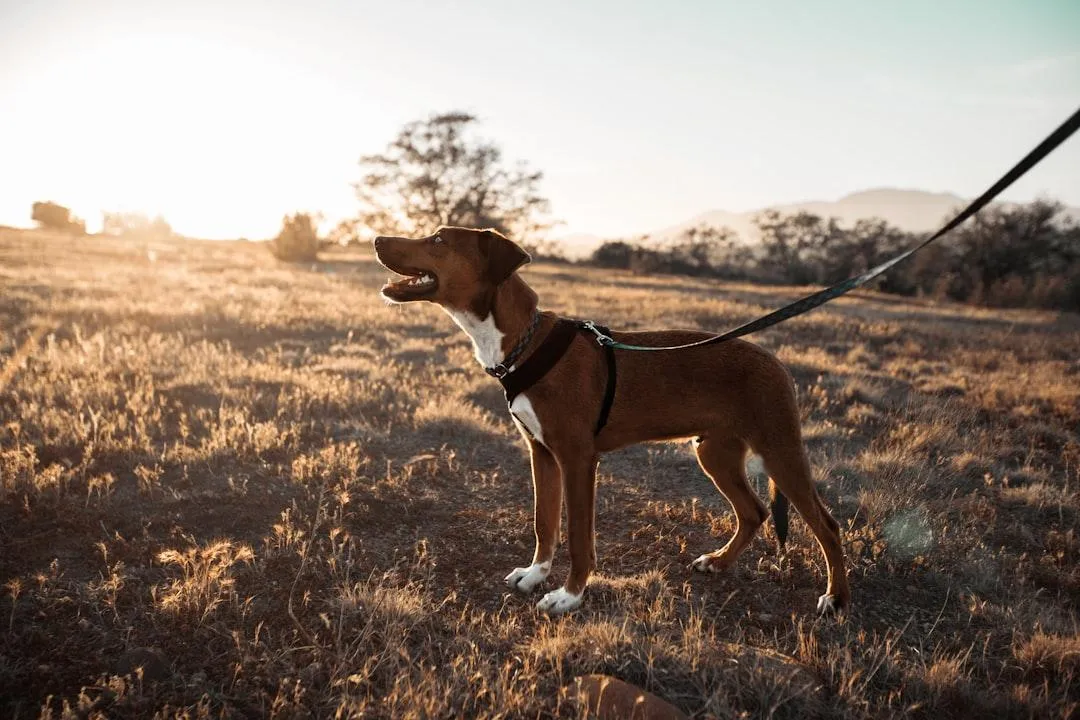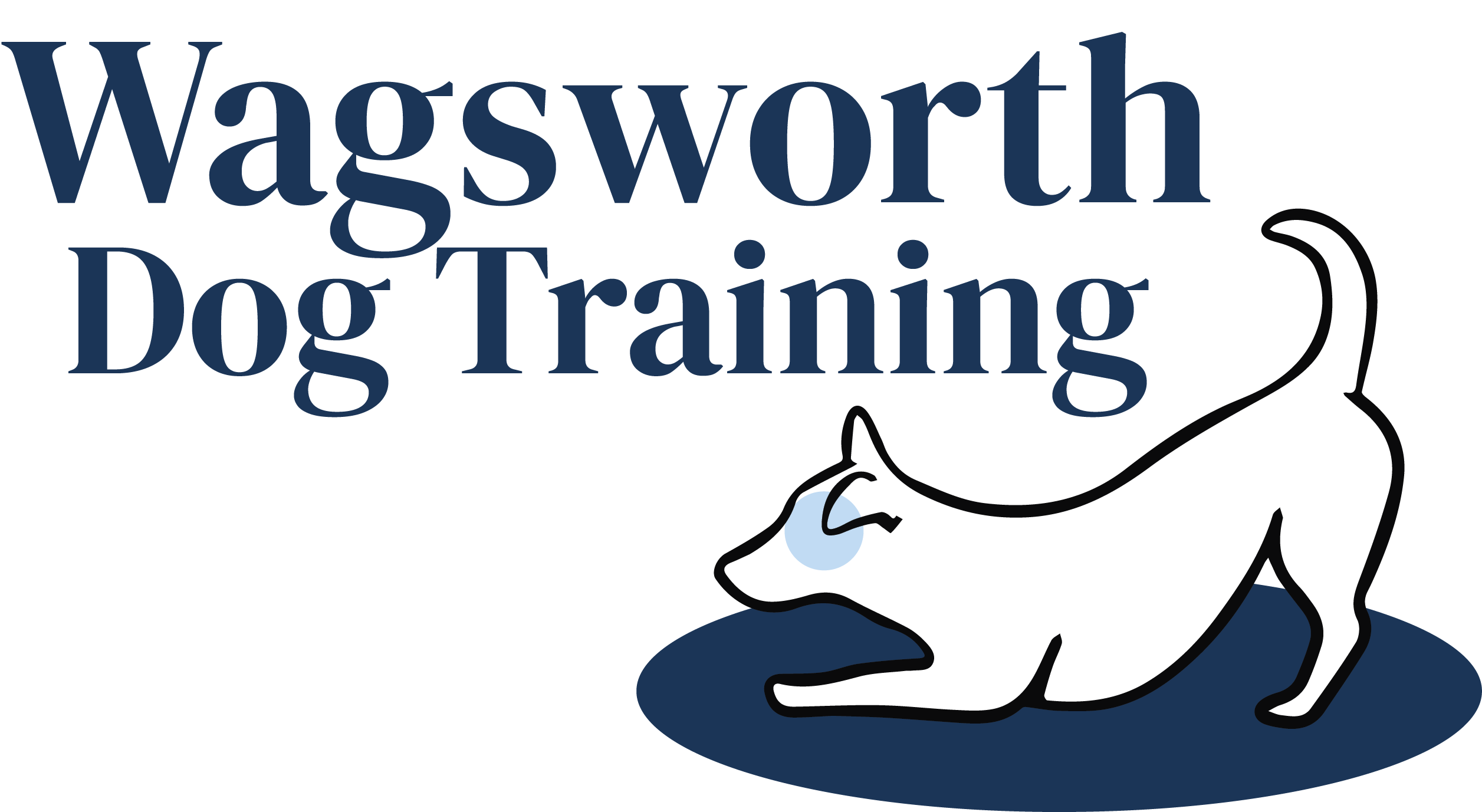
It Takes Two To Pull
Pulling on the leash is one of the most common struggles among pet dog guardians. So much so that there is a whole category of countless products marketed as "no-pull", all the way from prong collars to harnesses of varying intrusiveness.
The irony here is real, as often the only thing making excessive pulling a problem in the first place is our insistence that our dogs mosey along at our slow, consistent pace – never stopping or speeding up to follow a smell.
This is the equivalent of pulling you around with your eyes squinted shut, while tied to a rope with little choice for direction or speed. Remember, scent is their primary sense. By asking such a difficult thing of them constantly, we make it extremely troublesome to actually train a nice loose-leash behavior – because leash behavior is being trained when the leash is attached, whether intentionally or not.
The human half of the solution
To truly meet your dog in the middle of this dilemma, you need to change how you walk with your dog.
When we adapt our dog walking behavior to suit our canine companions' needs, Sniffari style with enriching environments and long leashes, we can make it magnitudes easier to actually train and maintain a good loose-leash walk.
This strategy is not only an efficient solution to the "problem behavior" of pulling on leash, in many cases it is actually a way to meet a need that is not being met, which has resulted in a poor leash walking experience for the dog in question!
If you live in urban or suburban environments, and your dog only ever gets to walk around on a 6' leash on sidewalks or in parks, it is your responsibility to begin providing this type of enriched experience for your companion.
Up until very recently, most dogs had access to this type of enrichment in their lives, and much less focus on walking nicely on a short rope in a highly distracting environment. With the explosion of pet dog guardians that now live in cities or suburbs, many dogs are no longer having their needs for foraging and exploration met – and one of the major pieces of fallout from this is "poor leash skills" and "leash reactivity".
Certainly paints leash behavior in a different light, doesn't it?
But now to the solution.
You can help, by seeking out or creating one or more environments suitable for sniffy on leash exploration. You can provide lots of access to this activity. I recommend at least once a day, every day. In fact, your dog would rather you only ever did this, and that "loose-leash" walking on a 6' leash was only a party trick or a game.
It's easier than you think, and it is a very relaxing and enjoyable way to spend time with your dog when you get it all figured out.
If you don't know how to start, I'd recommend learning the BAT leash skills or reading the BAT 2.0 book.
I can't say enough good things about the BAT 2.0 leash handling skills.
They are a minor step up in the amount of work required on the human end compared to a 6', but when you are handling a 15' or 20' properly with these skills, your dog has essentially off-leash freedom in a circle with the radius of the leash.
You can also, with an appropriately thin leash, keep the entire thing off the ground. Yes, even while scooping poop, or checking a message.
If you want to learn the finer points of BAT leash handling, book a discovery call or private lesson to get hands-on, detailed instructions. You may find you need 2 or 3 lessons plus practice to truly learn these skills, but your dog will thank you!
How does it help?
Dog training is a numbers game. When you have a highly un-dog-like behavior that you want to teach, you need to first teach that behavior with tons and tons of reinforcement, and then maintain that behavior with at least intermittent secondary reinforcement, otherwise it will deteriorate.
Walking your dog on a leash, you are always training them, for they are always learning. A 6 foot rope and a consistent, slow, human walking pace is an extremely un-dog-like behavior. Thusly, if you are not reinforcing a good loose-leash walk, somehow (premack anyone?), your learned loose-leash behavior will be deteriorating.
Add to that the frustration of not being allowed to properly utilize their primary sense, and you'll understand how rapidly a loose-leash walking behavior could deteriorate if not maintained properly.
As this behavior deteriorates, it can also have wide ranging effects on the dogs perception of the walk, the leash, the collar/harness, and the contexts and areas related to these things.
I like to refer to this concept as the "Bank Account". Each learned behavior could be said to have its own bank account, but it is particularly useful to think of loose-leash walking and recall in this light, as they are behaviors likely to deteriorate quickly if only used when needed.
Good things make deposits into the bank account, like training with fun games, or rapid-fire reinforcing the behavior in question. Things also withdraw from the bank account. Examples might be harsh voices, aversive experiences, or lack of reinforcement for a previously reinforced behavior!
A behavior with a balance of 0 in this "bank account" is very unlikely to be performed when cued, and if it is being reluctantly performed and not reinforced it certainly won't continue to do so for many repetitions.
How does adapting my walking patterns sway this numbers game, then?
By walking your dog on grand sniffy adventures, on a 10' or longer line, in an enriching area, for more than 50% of their on-leash time, we can weigh the scales in our favor in a few ways.
First, by providing an on leash experience that is intrinsically reinforcing for our dogs, we are having the environment make large deposits into the "being on leash outside" bank account.
Note that if your dog really struggles with pulling (negative account balance), you may have to switch to an entirely new harness and long line, and put some work into developing your sniffy walk before this will take effect.
Second, by making less of our on-leash time the high-demand behavior that is walking on a 6' leash, we are just simply stacking the numbers in our favor!
Less repetitions of the learned behavior, less reinforcement required to maintain it. Simple as that.
Last but not least, when we adapt our walking style to suit our dogs needs, we are providing for them the level of enrichment that will lead to a calmer, happier dog, with a healthier and stronger bond with their handler. This will pay out in the form of increased desire for proximity, increased handler focus, and an all around more pleasant walking experience for all.
Lower overall tension around the leash, less likely your dog will reach the end of it, and more likely you will both be in a state conducive to a good happy focused walk when needed!
If you're looking for help with leash training for your dog, book a free discovery call to discuss how we can set you and your furry friend up to succeed!

